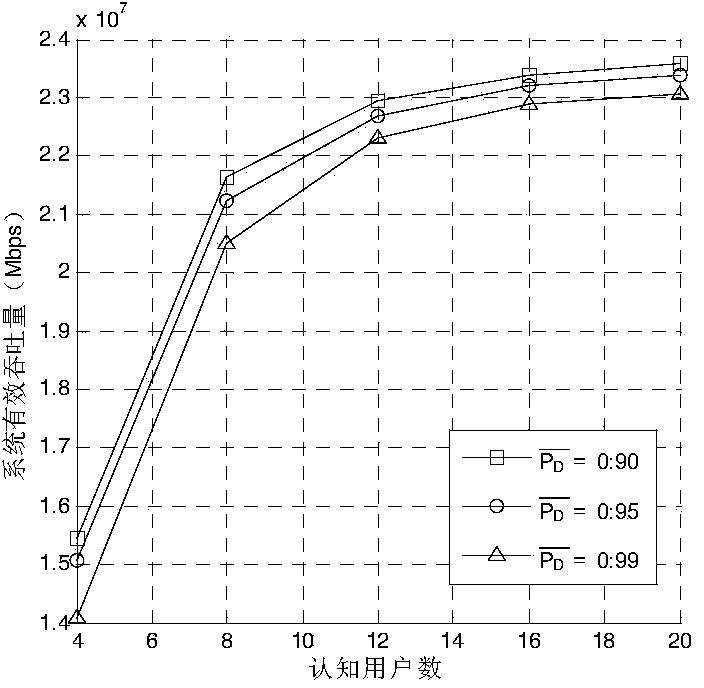Parallel cooperation spectrum sensing method based on genetic algorithm
A genetic algorithm and cooperative spectrum technology, applied in the field of cognitive radio spectrum sensing, can solve problems such as high throughput, without considering throughput and sensing time
- Summary
- Abstract
- Description
- Claims
- Application Information
AI Technical Summary
Problems solved by technology
Method used
Image
Examples
Embodiment Construction
[0040] The present invention will be further described below in conjunction with accompanying drawing:
[0041] The system model of the present invention is as follows:
[0042] In a centralized cognitive radio network consisting of a fusion center and N cognitive users, the sensing objects include M heterogeneous channels. Each sub-channel has a different bandwidth, a different transmission rate, and a different usage probability. H 0 and H 1 Indicates that the channel is idle and occupied by the primary user. Cognitive users are divided into perceptual time slots T in each time slot T s and transmission slot T r Two parts, T=T s +T r . In each time slot T, T s and T r Can vary within a certain range. In order to facilitate the synchronization of each node and reduce transmission overhead, T s It can only be selected among K discrete values, and each discrete value is arranged from small to large, denoted as T s (k), where k=1,2,...,K. Each cognitive user in a p...
PUM
 Login to View More
Login to View More Abstract
Description
Claims
Application Information
 Login to View More
Login to View More - Generate Ideas
- Intellectual Property
- Life Sciences
- Materials
- Tech Scout
- Unparalleled Data Quality
- Higher Quality Content
- 60% Fewer Hallucinations
Browse by: Latest US Patents, China's latest patents, Technical Efficacy Thesaurus, Application Domain, Technology Topic, Popular Technical Reports.
© 2025 PatSnap. All rights reserved.Legal|Privacy policy|Modern Slavery Act Transparency Statement|Sitemap|About US| Contact US: help@patsnap.com



